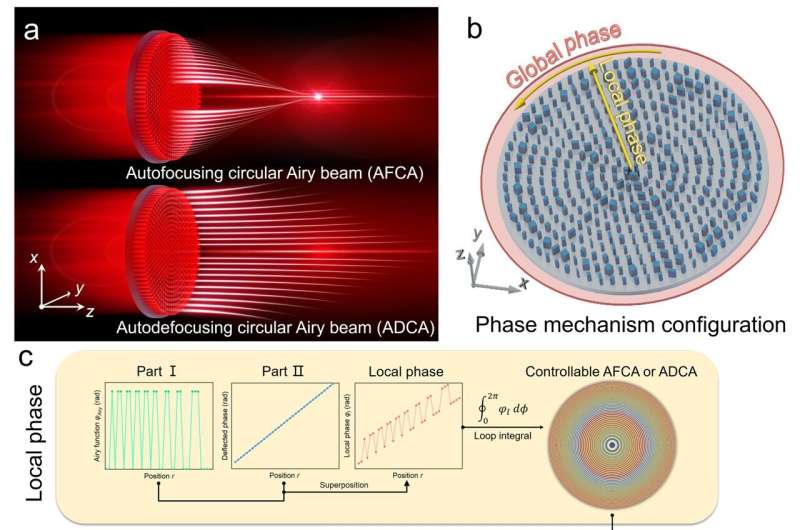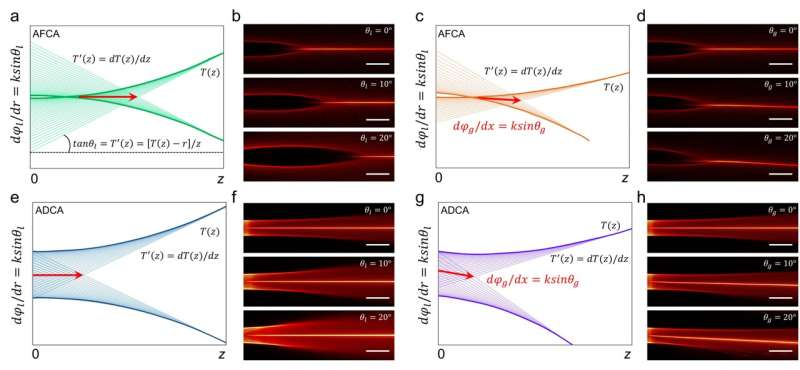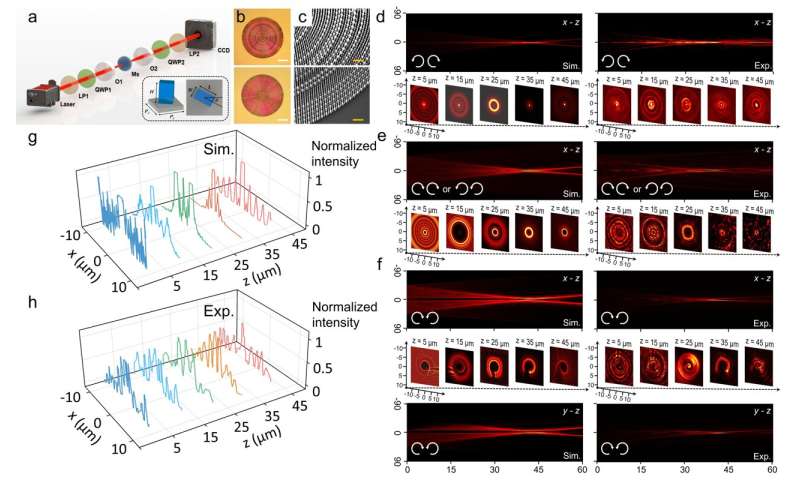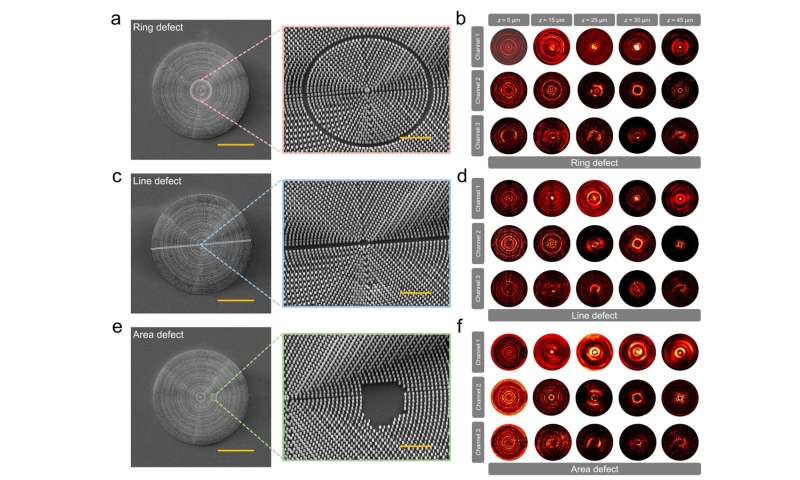April 8, 2024 dialog
This article has been reviewed according to Science X's editorial process and policies. Editors have highlighted the following attributes while ensuring the content's credibility:
fact-checked
trusted source
written by researcher(s)
proofread
Propagating dimensions of light: Deforming versatile non-diffractive beams along the optical trajectory

The diffraction of light is a ubiquitous phenomenon in nature where waves spread out as they propagate. This spreading of light beams during propagation limits the efficient transmission of energy and information. Therefore, scientists have endeavored to suppress diffraction effects to better maintain the shape and direction of light beams.
Over the past few decades, there have been significant breakthroughs in controlling the structure of light. For instance, in 1979, Berry and colleagues predicted a type of special beam called Airy beams (ABs), which exhibit self-acceleration and self-bending without diffraction. And in 1987, J. Durnin realized Bessel beams (BBs), a special solution to the wave equation that can suppress diffraction. These discoveries have greatly advanced both fundamental optics and applications.
However, devices for modulating non-diffracting light fields have typically been bulky and have limitations such as low resolution and difficulty encoding the phase profile. The development of metasurfaces has brought new changes, using the precise arrangement of nanoscale antenna arrays to miniaturize optical devices and achieve multidimensional control of light fields through their birefringence. This technology is considered a key enabler for the development of next-generation photonic integrated platforms.
Recently, our team has made progress in this area. We successfully reconstructed non-diffracting light field along the propagation path, observing the natural transformation of circularly Airy beams (CABs) into BBs after propagating a distance.
This research was made possible by our proposed mechanism of joint local-global phase control, allowing us not only to modulate the radial phase gradient, but also to facilitate the encoding of more complex, non-diffracting optical fields. The work is published in the journal Laser & Photonics Reviews.

We decomposed the 2D problem into the integration of 1D phase functions and the superposition of 2D phase functions, as depicted in Figure 1b. We vividly illustrated this process using theoretical analysis and ray tracing techniques, referring to it as the "Transformers" of the optical domain, as shown in Figure 2.
After modulation of the metasurface, scattered light converges into clear ABs, which overlap to form non-diffracting BBs. Furthermore, by leveraging the potential of triple birefringent nanoantennas, we introduced new techniques for structuring light fields, doubling the number of light field types to six (Figure 3). Finally, we demonstrated the high tolerance of our device to manufacturing defects (Figure 4).
-

Figure 3. Experimental characterization of sample and nanophotonic fields. a) optical setup for observing CABs in different polarization channels. LP represents linear polarizer, QWP denotes quarter-wave plate, and O refers to the objective with NA=0.4. b, c) top view and bottom views respectively present the optical microscopy (scale bar, 20 μm) and SEM (scale bar, 5 μm) characterizations of AFCA and ADCA samples. d, e, f) simulated and experimental results of tri-functional metasurface for generating AFCA, vortex AFCA, and spiral AFCA. While the co-CP yields the same results due to the equality of the diagonal elements in the Jones matrix. g, h) simulated and experimental measurement of FWHM results for AFCA at different transverse planes. Credit: Laser & Photonics Reviews (2024). DOI: 10.1002/lpor.202301372 -

Figure 4. Sample characterization and experimental measurement of defective metasurfaces, displayed from top to bottom: ring, linear, and area defects. a, c, e) the SEM and their partial magnifications for the three types of defects, respectively, left scale bar, 20 μm,right scale bar, 5 μm. b, d, f) transverse distributions in different cross-sections along the optical path within the three channels. Credit: Laser & Photonics Reviews (2024). DOI: 10.1002/lpor.202301372
In summary, this research represents not only a pivotal step in the use of non-diffracting light and enhancing the multifunctionality of metasurfaces, but also lays a solid foundation for the advancement of advanced on-chip, nano-optical platforms and innovative manufacturing technologies. This holds significant implications for the development of the optical field, driving optical device performance and functionality to new heights.
This story is part of Science X Dialog, where researchers can report findings from their published research articles. Visit this page for information about Science X Dialog and how to participate.
More information: Tianyue Li et al, Spin‐Selective Trifunctional Metasurfaces for Deforming Versatile Nondiffractive Beams along the Optical Trajectory, Laser & Photonics Reviews (2024). DOI: 10.1002/lpor.202301372
(c) 2024 ScienceX





















